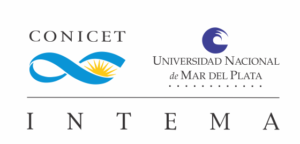
The Ceramics Division is a group of investigationformed at the end of the eighties. Initially its activity themes were of synthesis, characterization and evaluation of ceramic materials for electronic and biomedical applications.
Later, were incorporated new themes of investigation on structure ceramics, magnetic ceramics, ceramics for recycling process, composed materials, hybrid covers, chemical- mechanic, refractories and technology of supercritical fluids. Actually, the group is formed by 12 researches, 3 personal of support and 13 interns distribute on different lines of investigation. The activities executed are mostly funded through projects by public organisms (CONICET, ANPCyT, UNMdP) and also by conventions with companies for the execution of projects or for the making of technics and advising services.
The Ceramics can be defined like those materials of inorganic-nonmetallic origin. This definition includes a broad of materials that go from a refractory for an industrial oven to a memory to store data. Despite of the differences of its applications, the study of these materials can be approach through similar methodologies of preparation, process and evaluation. The technological demand to develop these materials and optimize its efficiency has incentivize the search of innovative experimental methods that allow to obtain ceramics nano and micro structured as well as strategies of evaluation of its properties and behavior, if possible on close conditions close to the service.
Actually, the activity of the Division concentrates on:
- Development and design of ceramic materials for specific applications
- Evaluation of ceramic raw materials and products
- Structured advanced Ceramics, dense or porous, and refractories
- Magnetic and electro-magnetic materials
- Nano-structured Ceramics for electronic application
- Piezoelectric materials and relaxors free of lead
- Organic- inorganic hybrid materials for applications in health and environment
- Nanostructured porous materials (of natural and synthetic origin)
Application fields
The investigated materials find application in the following strategic sectors:
Energy:
• Lead-free piezoelectric ceramics for energy harvesting
• Materials with hierarchical porosity and controlled morphology based on silicon oxycarbide
• Semiconducting and conducting films for optoelectronic applications
Industry:
• Magnetic and magnetoelectric ceramics for data storage devices
• Oxide porous ceramics as thermal insulators
• Refractories for steelmaking industry and other industries
• Porous ceramic materials obtained by 3D-printing
Health:
•Magnetic nanoparticles with theranostic action
• Functionalized Calcium phosphate bone cements
• Biocide coatings based on hybrid systems
Environment and Sustainable Development:
• Ceramic pieces for civil construction containing biomass residues previously used as heavy metal adsorbents
• Membranes with ceramic nanoparticles for environmental remediation

